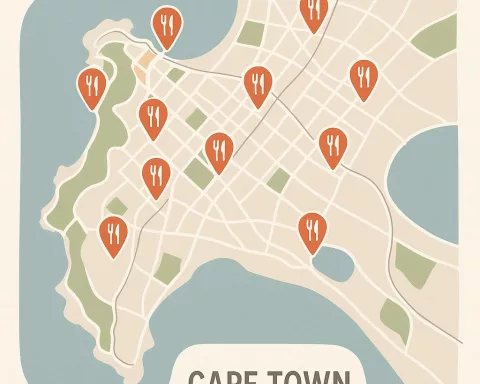Javier Milei, the president of Argentina, met with Elon Musk, the tech giant, and gave him a chainsaw as a symbol of their shared dream for big changes in government and economy. The chainsaw represents their desire to cut through red tape and promote freedom. Both leaders are known for shaking things up in their fields—Milei wants to reduce government spending, while Musk is famous for revolutionizing industries. Their meeting highlights a new wave of thinkers who believe in less government and more innovation to create a better future.
What Does the Meeting Between Javier Milei and Elon Musk Symbolize?
The meeting between Javier Milei and Elon Musk symbolizes a shared vision for radical political and economic reform. Their exchange, highlighted by Milei’s gift of a chainsaw, represents a commitment to dismantling bureaucratic barriers and advocating for libertarian principles, emphasizing freedom and innovation in governance.
In a world where symbols carry as much weight as words, the recent meeting between Argentina’s President Javier Milei and tech mogul Elon Musk at the Conservative Political Action Conference (CPAC) transcended a simple exchange of pleasantries. Their interaction, centered around Milei gifting a chainsaw to Musk, became a vivid tableau of shared ideologies on political and economic reform. The chainsaw was not just a whimsical present; it embodied a profound statement about their mutual visions for dismantling bureaucratic red tape and sparking transformative change.
The Chainsaw: An Emblem of Radical Reform
Javier Milei rose to political prominence during his 2023 campaign for the Argentine presidency, using a chainsaw as a powerful metaphor for his objectives to slash government spending. This imagery was a nod to his plans to curb the state’s influence on daily life, borrowing from the rebellious spirit of the punk rock movement of the late 1970s. Much like the punk ethos that challenged societal norms, Milei’s approach to governance aims to disrupt the status quo through radical economic policies.
The chainsaw bore the engraved phrase, “Viva la libertad, carajo,” meaning “Long live liberty, damn it.” This phrase encapsulates Milei’s libertarian beliefs, echoing the historical calls for freedom championed by Enlightenment thinkers and modern-day advocates for minimal government intervention. By gifting this emblem to Elon Musk, Milei not only reinforced his commitment to these principles but also acknowledged Musk’s own impact as a disruptive force in technology and business.
Musk and Milei: Champions of Disruption
Elon Musk has built a reputation for revolutionizing industries from automotive to space exploration and energy. His tenure under former US President Donald Trump saw Musk spearheading initiatives to streamline governmental functions. These efforts often included reducing workforce numbers, notably within the Internal Revenue Service (IRS), reflecting a philosophy of trimming government excess to boost efficiency and innovation.
The interaction between Milei and Musk extended beyond mere political theater, symbolizing a convergence of like-minded visionaries dedicated to redefining government’s role in a swiftly evolving global environment. Both leaders personify a new breed of thinkers challenging conventional paradigms, advocating for a future where private enterprise and technological progress lead societal advancement.
This encounter also mirrors broader socio-political trends, with Musk’s administrative overhauls highlighting ongoing debates about government size and scope. These actions resonate with historical shifts, such as the Reagan-Thatcher era of deregulation and privatization during the 1980s, which were seen as antidotes to economic stagnation. While often divisive, these movements emphasize the enduring tension between state control and market freedom.
The Ripple Effects of Libertarian Ideas
Anecdotal accounts from those impacted by these administrative changes reveal a multifaceted reality. For some, job losses evoke unwelcome instability, echoing industrial upheavals of the past. For others, these changes represent a necessary transition towards a more agile government, better equipped to meet 21st-century challenges with speed and precision.
The dynamic between Milei and Musk underscores the rising influence of libertarian principles in contemporary politics. As traditional political lines blur, leaders like Milei and Musk prioritize pragmatic solutions over ideological rigidity. While this approach appeals to many, it also raises concerns about potential risks in reducing regulatory oversight, especially in sectors critical to public welfare.
In their quest to dismantle bureaucracy, both figures draw inspiration from historical “creative destroyers.” Joseph Schumpeter, who introduced the concept of creative destruction as a catalyst for economic innovation, provides a theoretical foundation for their actions. Schumpeter argued that dismantling outdated structures is crucial for progress, a principle that underlies both Milei’s and Musk’s endeavors.
Cultural and Political Ramifications
The cultural ramifications of Milei and Musk’s actions should not be overlooked. The chainsaw, as a symbol, transcends its immediate context, inviting comparisons to artistic movements like Dadaism, known for using absurdity to critique societal norms. This parallel underscores the power of unconventional symbols to provoke thought and inspire discourse, highlighting the enduring interplay between politics and culture.
Ultimately, the exchange between Milei and Musk reflects a broader narrative of transformation and adaptation. As global challenges increase, leaders and innovators grapple with governance and growth complexities in an era defined by rapid technological advancement and shifting geopolitical landscapes. Their actions, though sometimes contentious, emphasize a shared belief in the potential of radical change to forge a more prosperous and equitable future.
In examining this event, one cannot overlook the underlying messages of resilience and reinvention. The chainsaw, in this context, becomes more than a tool; it serves as a clarion call for bold action and decisive leadership amid uncertainty. As societies worldwide navigate the intricacies of change, the legacy of figures like Milei and Musk will likely continue to shape history, inspiring future generations to challenge conventions and redefine the boundaries of possibility.
“`markdown
What is the significance of the chainsaw given by Javier Milei to Elon Musk?
The chainsaw symbolizes a commitment to radical political and economic reform, representing the desire to cut through bureaucratic red tape and promote liberty. This exchange highlights their shared vision for less government intervention and more innovation, encapsulating Milei’s libertarian beliefs.
How do Milei and Musk view the role of government in society?
Both leaders advocate for a reduced role of government, emphasizing the importance of private enterprise and innovation. They believe that a leaner government can lead to greater efficiency and foster an environment where technological advancements and economic growth can thrive.
What are Javier Milei’s primary goals as president of Argentina?
Milei aims to significantly cut government spending and reduce the state’s influence in everyday life. His approach is inspired by libertarian principles and seeks to promote freedom and individual initiative in the Argentine economy.
How does Elon Musk’s background align with Milei’s vision?
Musk is known for revolutionizing various industries and advocating for streamlined governmental functions, echoing Milei’s desire to reduce bureaucracy. His initiatives often focus on boosting efficiency, which aligns with Milei’s goals of minimizing government excess and fostering innovation.
What historical context influences the ideas presented by Milei and Musk?
Their ideologies resonate with historical movements advocating for deregulation and privatization, such as the Reagan-Thatcher era of the 1980s. Both leaders reflect a broader trend of challenging conventional governance paradigms, promoting a future where innovation is prioritized over bureaucratic constraints.
What are the potential risks associated with their reform agendas?
While their approach may lead to increased efficiency and economic growth, it also raises concerns about reduced regulatory oversight, particularly in critical sectors affecting public welfare. The balance between promoting innovation and ensuring public safety and stability remains a contentious issue in their respective visions.
“`









